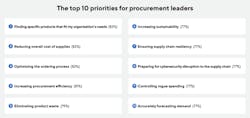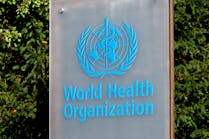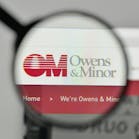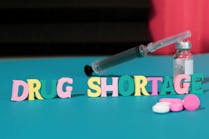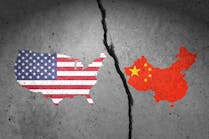State of Healthcare Procurement:
Part I: Optimizing Healthcare Procurement: Balancing Quality and Cost
Editor’s note: This article is the first in a three-part series examining the challenges and opportunities facing healthcare procurement leaders as outlined in the 2024 Healthcare Procurement and AI playbook from Healthcare Purchasing News (HPN) and Staples Business Advantage (SBA). Respondents’ comments have been lightly edited for length and clarity.
Healthcare procurement has navigated a complex and volatile landscape in recent years. Confronted with tightening margins, rapid industry evolution, and geopolitical instability ranging from cybersecurity threats to climate change, procurement leaders have demonstrated exceptional resilience.
“We are facing challenges due to disruptions in the global supply chain, leading to delays in the delivery of essential medical supplies and equipment,” says one hospital supply chain executive in an April State of the Market survey from HPN and SBA. “These disruptions can impact patient care and operational efficiency.”
However, a path forward is emerging, driven by the potential of AI and advanced technologies. Nearly three-quarters of the 170+ senior executives and directors contributing to the 2024 Healthcare Procurement and AI report have adopted AI in procurement functions, with 92% reporting positive outcomes.
To build healthcare supply chains that stand the test of time (and tech disruption), leaders must balance innovation with proven best practices. According to survey respondents, three mandates will shape the industry’s future: quality, efficiency, and innovation (figure 1). This series will explore each in detail.
Securing high-quality partnerships and products is paramount. An overwhelming 83% of respondents say it’s a “critical” or “high” priority to find specific products that meet their organization’s needs, equaling the importance of reducing the overall cost of supplies.
Figure 1: Top 10 “high” or “critical” priorities for procurement leaders
The quality challenge
Achieving a universal definition of “quality” within an organization is complex: “Some of the top challenges are just making sure that everyone is safe, everyone is happy, and everyone comes to a compromise with the products that are purchased,” one leader says.
Getting it right is crucial, given the broader implications for initiatives like talent retention and engagement. One respondent says they’re laser-focused on raising the spirits of employees and patients because their organization is experiencing “super high turnover” and widespread morale dips.
Solution 1: Addressing quality and cost together
Quality and cost are inextricably linked. One respondent summed up their top pain point as “trying to find affordable, high-quality options that please everyone” — a sentiment that survey respondents echoed again and again. For many, that means meeting rising standards for health, hygiene, and performance within constrained budgets.
While often viewed as competing priorities, quality and cost can yield substantial organizational benefits when addressed holistically. For instance, controlling rogue spending, a top concern for 76% of respondents, enhances process rigor and overall procurement efficiency.
“The whole value equation is improved,” says Jack Koczela, director of analytics and transformation, supply chain at Froedtert Health, a Wisconsin-based system with 10 hospitals and more than 45 health centers and clinics. “We know that we’re increasing the overall experience of procurement, be that for the clinicians who are using it, or for our staff who experience a more automated purchasing process.”
Solution 2: Rethinking your supply chain partner
Identifying the right supplier partner can be difficult. “The biggest challenge is to select reliable and stable suppliers with an excellent reputation in the industry,” one leader says. Another cites “vendor communication” as a big hurdle.
Aside from dependability, leaders are looking for diversity, swift handling of after-sales issues, and a broad or national footprint from their partners.
When it comes to the products themselves, quality assurance is a significant part of the equation. It’s also a big lift: Because the procurement team’s purview can cover everything from general breakroom supplies to specialized offerings like EVS cleaning solutions, “choosing safe, reliable, and hygienic products, as well as trustworthy suppliers, is essential,” one leader says.
Prioritizing quality can yield lasting rewards
As HPN reports, “Where in the past a hospital might purchase the cheapest product to cut upfront costs, today they are leveraging value analysis committees (VAC) and other key stakeholders to analyze the long-term impact of supply choices. They have learned that, in some cases, paying a little extra for a higher quality product at the time of purchase can lead to significant savings in the long run as a result of less waste, improved performance and enhanced safety.”
Staples Business Advantage is a trusted partner for procurement leaders at thousands of healthcare organizations nationwide. Partnerships with top GPOs enable clients to achieve significant cost savings while streamlining purchasing across multiple product categories, including EVS, furniture, breakroom, office supplies, and more. We help our partners leverage data-driven insights and technology to optimize purchasing, control spending, streamline processes, and enhance supply chain resiliency. Learn more
Sponsored by:

